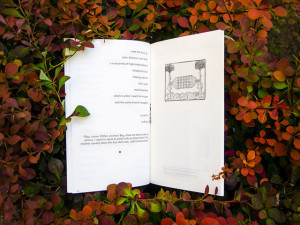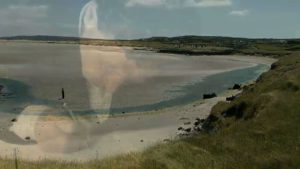I think “schizo-culture” here is being used rather in a special sense. Not referring to clinical schizophrenia, but to the fact that the culture is divided up into all sorts of classes and groups etc., and that some of the old lines are breaking down. And that this is a healthy sign.
–William Burroughs
In November of 1975 philosopher and founder for the semiotext(e) Sylvere Lotringer organised a conference titled Schizo-Culture which took place at Columbia University, New York. It was a melting pot of radicalism and philosophical workshops that brought together, for the first time, an explosive mixture of French and American theorists whose writings and lectures have since become an integral component of any Western visual art education. Participants included, among others, William S. Burroughs, Michel Foucault, John Cage, Gilles Deleuze, Felix Guattari, Arthur Danto and Jean-Francois Lyotard. While the colloquium focused on the interrelated topics of prisons and madness, Lotringer was impactful in bringing together thinkers from two different continents; bridging a philosophical gap between French and US thinkers while proving the influence of semiotext(e) publishing.
![Schizo-Culture (2014) @ [ space ] exhibition view. Courtesy the gallery.](https://d23pzp3qb0c2ie.cloudfront.net/wp-content/uploads/2014/10/2Schizo-Culture-2014---space-exhibition-vie.-Courtesy-the-gallery..jpg)
Schizo-Culture: Cracks in the Street at [ space ] takes mid-70s event as a starting point for a small but indulgent exhibition that skillfully weaves both a rare collection of archival material related to the original conference with related artworks and commissions by contemporary artists. The event is used as a springboard to reflect on affiliated movements such as no-wave and the anti-capitalist attitudinal relationships that existed in the late 1970s in Manhattan and Paris: a DIY creative culture still mostly uncontaminated by the present day co-terminus relationship between art and its marketability. It’s a space set up like a workshop with pencils and factsheets outlining the agenda and backgrounds of panelists from the original event. Although no video footage can be found from the symposium itself, there is audio recorded from Lyotard’s speech played from a nearby stairwell, as well as well as footage from Deleuze’s courses at Vincennes in Paris where he taught for the majority of his career, and an interview conducted by Dutch philosopher Fons Elders with Foucault in 1971.
The vast collection of pamphlets and posters are well-complemented by a series of pared-down and un-elaborate visual specimens, that appear, fittingly, as if they were executed by the psychologically impaired. On entering the main exhibition room, one is confronted by Burroughs’ disturbing, Paul Klee-esque painted portrait Shot Sheriff (black eyes) (1989) is hung alongside his Circle (1988) – a visual representation of Deleuze’s conception of the rhizome which he explains in a video clip beside the painting. The lecture is played through 70s tube televisions, with pillows to relax on and pencils to take notes with across original timetables from the symposium and other printed memorabilia. Throughout the space there is a breadth of letters, flyers, and posters either wall mounted or under vitrines creating a cross between a university classroom and participative exhibition space.
![Schizo-Culture (2014) @ [ space ]. Install view. Courtesy the gallery.](https://d23pzp3qb0c2ie.cloudfront.net/wp-content/uploads/2014/10/Schizo-Culture-2014---space-.-Install-view.-Courtesy-the-gallery..jpg)
Guiding the visitors eye away from the video lecture and interview is a ‘wander line’ drawing by the peculiar outsider Fernand Deligny. His experimental cartographic lines were foundational for Deleuze and Guattari’s conception of the rhizome, while being a significant early example of art therapy – Deligny had created an encampment/treatment centre for autistic children in France where making wander lines was encouraged as a means for patients to work through their difficulties. Beneath the line drawing is an oil on wood ‘Head’ painted by artist, writer and schizophrenia sufferer Mary Barnes. There is a welcoming sense of flow from one work to the next and between the archival content and drawings/paintings while breaking down cultural divisions. Terminal Beach’s video contribution ‘and so I’ll make myself believe it that this night will never go’ (2014) is the most recent work in the show. Set in its own room next to the main gallery, the two-channel installation shows a man reading Deleuze and Guattari’s Anti-Oedipus: Capitalism and Schizophrenia accompanied by a rush of cars and streams of internet news acknowledging the longstanding influence of Schizo-Culture while embodying it (the writing, the conflux of movement, the music) in a contemporary milieu.
![Schizo-Culture (2014) @ [ space ] exhibition view. Courtesy the gallery.](https://d23pzp3qb0c2ie.cloudfront.net/wp-content/uploads/2014/10/1Schizo-Culture-2014---space-exhibition-view.-Courtesy-the-gallery..jpg)
Cracks in the Street is a welcome reflection on an event and a testament to the interrelated initiatives of the thinkers and artists involved in semiotext(e) as a movement. The influential publishing house is celebrating its 40th year which has inspired celebrations at institutions such as MoMA PS1. While semiotext(e) and its founding members retain a high level of interest from academics – specifically in cultural studies and contemporary art history – their standing for post ‘net visual artists is waning. Other philosophers (i.e. Slavoj Zizek), technologists (i.e. Jaron Lanier), multidisciplinary academics/curators (i.e. Donatien Grau), not to mention radically different and digitally (re)configured systems of distribution for visual content, have in many ways unseated the longstanding formative post-structuralist thought in the context of contemporary art being produced today. Terminal Beach as a group being a welcome exception along-with practitioners from an older generation of makers including Peter Halley and Gary Indiana.
Cracks in the Street possesses a project-like atmosphere to examine a fading but not forgotten theoretical milieu. It possesses a pedagogic and experimental vibe that coalesces with visual specimens, ones that are not quite schizophrenic in the clinical sense but never stray far from the domain of madness.**
Exhibition photos, top right.
















